Given their potentially high value, easy portability, and often inexperienced buyers eager for a bargain, fake watches are a goldmine for shady people out to make a dishonest buck. In the past, many of these fakes were obvious, poor copies that gave up their true origins under even a mildly hard stare. (As early as the mid-1800s, some Swiss pocket watch manufacturers were producing fake “railroad grade” copies of better-made US models.) Modern manufacturing techniques, however, have allowed more fakes to hit the market than ever. Some of them are so good that even trained pros have trouble telling them from the real thing. Unfortunately for watch collectors, it’s the time of the “superfakes.”
The bulk of the serious fakes are of luxury brands with high profit margins: Rolex, Omega, Breitling, and the like. But that doesn’t mean that vintage Bulova, Hamilton, or Benrus you’re eyeing on eBay is completely on the up-and-up. Here is some advice and links to more detailed resources on how to make sure you’re buying an authentic watch.
Fake Watch Basics
Identifying a poor fake can be fairly simple by looking for some common problems:
- Cheap, lightweight cases on watches that should be solid gold
- Garden-variety movements in brands known for manufacturing their own
- Misspellings and other errors in stamped or engraved text and numbers on the case
- Misspellings and other errors on the dial (though this could just be the sign of a bad redial instead of a full-on fake. See below for more on redials).
- Display backs on watches that shouldn’t have them. (Rolex, for instance, doesn’t make any watches with display backs.)
Be aware that some online articles make some incorrect claims about how to identify fake watches. For instance, they’ll say that Rolex (or other high-end brand) second hands sweep smoothly without visible “ticking” or that no Rolex should ever tick once per second. Neither is completely true. Some Rolex watches have quartz movements that tick once per second. Most Rolexes, however, have mechanical movements that tick eight or six times per second, not a perfectly smooth sweep. Bob’s Watches has a good article about fake Rolex’s that everyone interested in buying vintage watches should read.
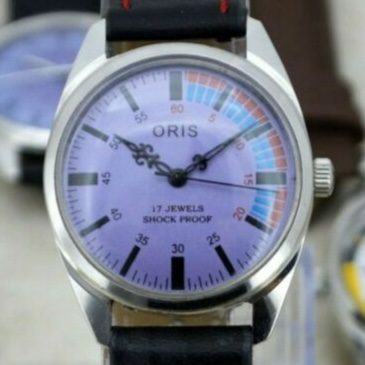
Dialing for Dollars
Much of the value of any watch is in the condition of the dial. Dials are fragile and easily damaged by moisture, sunlight, and servicing accidents. So a classic watch with a pristine dial will be worth far more than a similar model with a damaged dial. (There are a few exceptions, such as certain watches with “tropical” patina on the dial.)
Cleaning watch dials is a risky business, thus many watch repair people, and even some service centers, will restore an aged dial by re-printing it or re-painting it. In best cases, these redials are done by highly skilled companies—even the original manufacturer—that use the original dial printing dies to duplicate the look of the watch when it first left the factory. Worst case is when someone redials a watch poorly—doing work by hand, for instance, that would have been done by a machine, introducing typographical errors or other mistakes, or using colors or styles that never would have appeared on the original. (Some eBay sellers are notorious for selling watches with dials in a kaleidoscope of colors that never existed on the originals. At least the seller of the purple-dialed “Oris” above admitted that the watch had a newly painted dial and even a different movement than the original. Thus making it a “frankenwatch.” See below for more about those.)
No matter the quality of the redial, collectors often devalue such watches compared with an original dial in even good condition. Where the debate lies in at what point a dial is so poor that a redial would actually increase the watch’s value. Some collectors argue you should almost never redial a watch. Others say that a good redial is better than a dial so ugly you wouldn’t want to wear the watch anyway.
How can you identify a redial? It’s not always easy, but be wary of watches where the dial is in vastly better shape than the rest of the watch. Compare the dial on the watch you want to pictures of similar models elsewhere. Look for typos or inconsistency in how numbers or letters are printed. Hodinkee has a great guide with pictures to help you develop your own skill at identifying redials.
Bride of Frankenwatch
Frankenwatches are what they sound like: A watch made by piecing together parts that were never meant to be in one watch. Definitions differ, but I think of frankens as taking parts from one brand and model (such as a movement) and putting them into another completely different brand and model, sometimes just to get the watch running, but sometimes to intentionally deceive a buyer into thinking they’re getting something they aren’t.
Marriage watches are a more polite term for a type of frankenwatch. These watches include parts from the same brand but between different models. (Say, taking a late 1960s dial and putting it into an early 1960s case, or swapping a late-generation movement into an early generation watch.)
In general, watch collectors despise frankens almost as much as outright fakes. Marriage watches, depending on the egregiousness of the merger, can be less of a problem, though they still aren’t worth nearly as much as an original.
Replicating Success
Then there are replicas and reissues. These are watches made under the original brand name that mimic or even duplicate an earlier classic design. A good example is the Hamilton Piping Rock, which has been released multiple times by Hamilton since the 1920s, most recently in the 1990s as a quartz model.
Replicas on their own aren’t a problem. The issue is when someone tries to sell the replica as an original. Sometimes this may be an honest mistake by an inexperienced seller, but not always.
Impersonating a Member of the Military
Another area where fakes often crop up is in “military” watches, such as WWI models that can crop up on eBay as “trench watches.” Identifying watches that the military might have actually used requires specialized knowledge. Worse, adding a fake “shrapnel guard” to an otherwise unremarkable watch from the early 1900s can dramatically increase the value for military collectors, so such fake guards aren’t uncommon. And the problem isn’t constrained to watches from the teens, even more modern military watches are dogged by fakes.
Buyer, as Always, Beware
As with all things about watch collecting, the best defense against buying something that isn’t what it seems is learning as much as you can about the models you like, realizing that you usually get what you pay for, and taking every claim with a grain of salt.
Recent Posts
The latest posts on collecting vintage watches that won't break your budget.
How to Start a Watch Collection
I began collecting watches and learning to do some of my own maintenance just a couple years ago for a several reasons. First, I encountered an old Hamilton in a second-hand store that reminded me of a watch I had seen at my grandfather’s house when I was a...
Space-age Flea Market Watch Find – The 1970 Jovial Vision 2000
Note: This watch is currently up for auction on eBay until April 11, 2023. On a recent trip to Montreal I visited the Market St-Michel Flea market and discovered a vendor who had a nice collection of watches ranging from a 1920s Waltham to 1980s LCD models. As I...
eBay Search Tips for Vintage Watch Collectors (and Everyone Else)
I've been an eBay member since 1998. And while the auction juggernaut certainly has plenty of problems, I've found it an invaluable resource both for buying and selling all kinds of collectibles. But if you're just using the site's standard search to find what you...
How Old is My Vintage Watch?
One of the most common questions for collectors is "how old is my watch?" Unfortunately, there's no single way to determine the age of a given vintage watch. Even watches from the same brand often have different ways of determining age depending on the era in which...
Uh-oh – A New Watch Obsession – Illinois 1928 Mate
I've been aware of Illinois watches, of course, but the brand always represented pocket watches, which have never interested me much. But at the NAWCC national conference last week, I came face-to-face with a wide range of Illinois wristwatches and became enamored....
Sometime(x)s You Get Lucky in a Box of Junk
I bought a lot of 30 broken watches for about 50 bucks off eBay because one of them looked like something I could use for parts. When I got the box home and started digging through it, I found this guy. It's a Timex Southampton, reportedly one of the rarest Timex...
Watching the World Go By, A Tick at a Time
Why yet another watch blog? When I started collecting just a short time ago, I found lots of great information on collecting watches all over the web. But there was no one place for a new collector who wasn't interested in high-end brands and models. This site is dedicated to consolidating what I've learned, and will continue to learn, in one place. At the same time, I hope to connect some people to the sources I find most valuable.
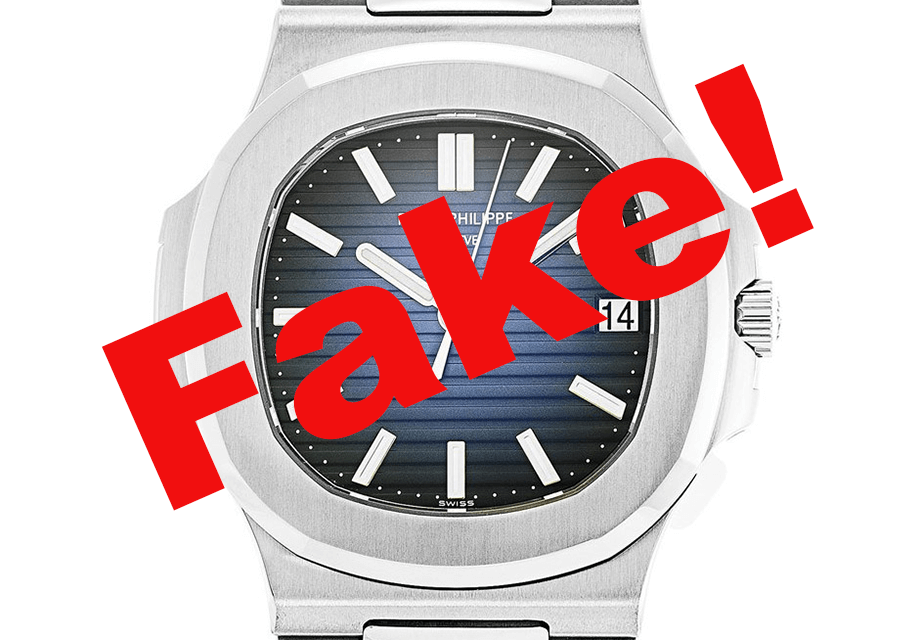

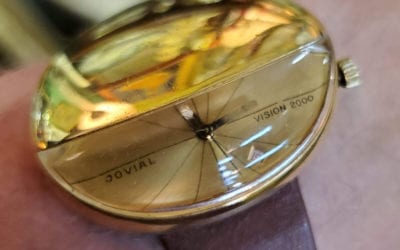



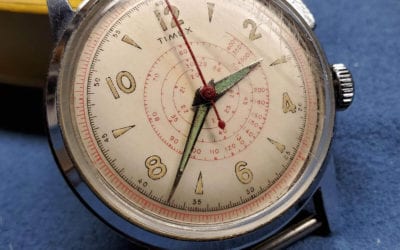
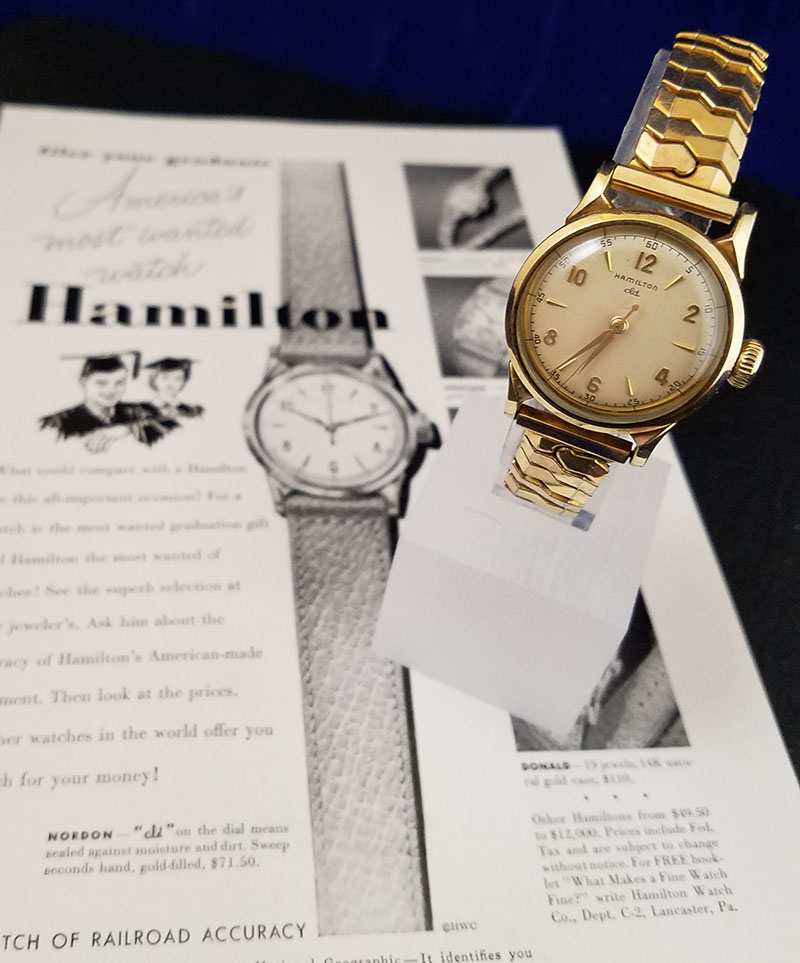
Recent Comments